
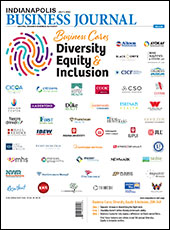
View the interactive edition
Welcome to IBJ’s fifth annual “Business Cares: Diversity, Equity & Inclusion” microsite.
In this year’s section we learn about progress on several DEI initiatives and hear about some best practices when it comes to embarking on the DEI journey.
- Republic Airways’ LIFT Academy is diversifying the flight deck on aircraft industry wide by giving flight training to local high school students from underserved communities.
- An Easterseals Crossroads executive discusses how she has overcome physical disabilities and helps others do the same.
- Central Indiana Community Foundation offers a progress report on the huge equity initiative it launched a few years ago.
- Local affordable housing financier CREA LLC shares what has worked in its quest to become a more diverse workplace.
- F.A. Wilhelm Construction discusses its mission of diversifying the construction industry workforce.
- Taft Law tells what the firm has learned on its always-evolving DEI journey.
- FrontRunner Media sings the praises of the Business Equity for Indy Procurement Roundtable, which connects Black-owned businesses with potential clients.
Thanks to the 61 companies and organizations that sponsored this important section of IBJ. Their investment will fund a Diversity, Equity & Inclusion awareness campaign throughout the month of July via print, digital, and e-newsletter platforms.
We hope you’ll support our sponsors as they join all of us in working toward a more diverse, equitable, and inclusive central Indiana
Sincerely,

Nate Feltman
Publisher, President & CEO
- Allison Transmission
- Ayokay Marketing
- Bell Techlogix
- Black Onyx Managment
- Bose McKinney & Evans LLP
- Central Indiana Community Foundation (CICF)
- CICOA
- Citizens Energy Group
- CNO Financial Group
- Columbus Regional Health
- Cook Medical
- CSO
- Curran Architecture
- Damien Center
- Delta Dental
- Dentons
- Duke Realty
- Easter Seals Crossroads
- Eskenazi Health
- F.A. Wilhelm
- Faegre Drinker
- First Internet Bank
- Franciscan Health
- Frost Brown Todd LLC
- Goelzer Investment Management
- Hall Render
- Hendricks Regional
- IBEW/Quality Connection
- IEDC
- IMS
- Indiana University
- Indiana Youth Institute
- Indianapolis Urban League
- IndyCar
- IUPUI
- JLL
- Katz, Sapper & Miller
- Kightlinger & Gray
- Knowledge Services
- Krieg DeVault LLP
- MHS
- Mojo Up Marketing + Media
- Morales Group Staffing
- Moser Consulting
- Metropolitan School District Lawrence Township
- Newmark
- Noble
- Northwest Radiology
- Northwestern Mutual
- OneAmerica
- PNC Financial Services Group
- Purdue University
- Republic Airways
- Resultant
- Salesforce
- TCU
- The Children’s Museum
- The Orchard School
- TRIMEDX
- United Way of Central Indiana
- Westpoint Financial
Bringing diversity to the cockpit
Republic Airways’ LIFT Academy helps Indiana high school students’ pilot aspirations take off
By Lauren Gaudion
Over the course of this summer, 16 central Indiana high school students are taking flight at Leadership in Flight Training (LIFT) Academy, flying toward their private pilot license in a Summer Youth Experience sponsored fully by Republic Airways. The cost of a private pilot license can be up to $15,000.
According to 2020 data from the U.S. Bureau of Labor Statistics, only 6 percent of aircraft pilots in the U.S. are non-white, but these students flying at LIFT are on their way to diversifying the flight deck. To join the summer program, students completed an application, expressing their motivation to fly. The program was selective, ensuring the students were able to commit to the rigor of flight training and the time commitment required to progress through training over the summer. For those selected, the commitment is worth it.
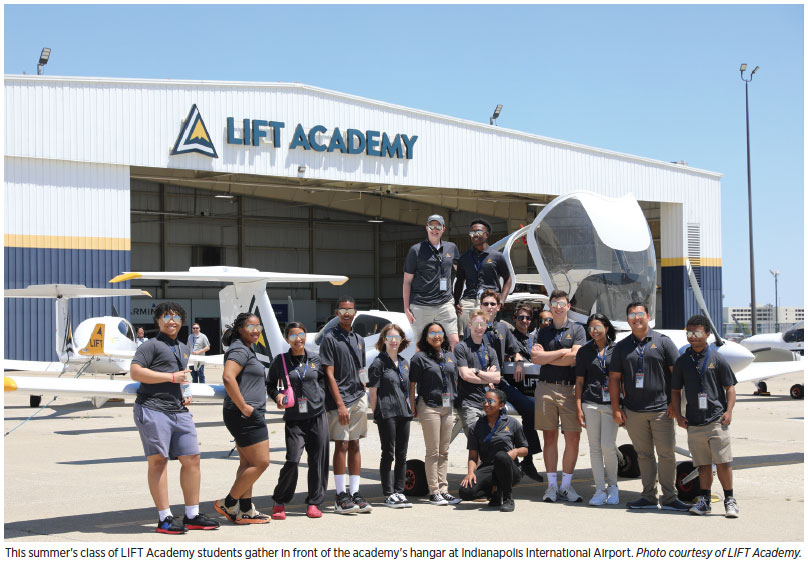
“I never thought I would be able to fly so soon. I’ve always thought I’d like to become a pilot someday, but this program let me take off much sooner,” Brenden Fenner, a 2022 graduate of North Central High School, said.
The intensive flight training program brings students onsite to LIFT Academy’s hangar on Indianapolis International Airport property for ground school and flight lessons for eight hours a day, five days a week. The students wasted no time taking off; they paired up with LIFT-certified flight instructors on the third day of the program for flights around Indianapolis. The goal is to get the students flying as soon as possible while also teaching them the principles and theories of flight and exposing them to various aviation career pathways.
Republic created LIFT Academy in 2018 determined to make aviation more accessible to those who longed to become airline pilots. Traditional barriers of cost and attainability have made the industry a distant dream for many, but especially for historically marginalized populations. In four years, LIFT has doubled the national average for both females and ethnic minorities in the flight deck within its student enrollment through its investments in tuition reimbursement and subsidies, helping to realize goals Republic set out to achieve.

“The program is essential to us because we can take aviation directly to historically marginalized communities, which will positively impact diversity in the industry’s future,” said Darrell Morton, Republic’s senior manager of education programs and diversity partnerships.
The inaugural program, which kicked off in the beginning of June, is already positively impacting the students who are participating.
Ayah Muhammad, a 16-year-old from Pike High School, has always wanted to learn to fly. “I’ve always wanted to become a pilot, from the moment I stepped on a plane. The environment of the cockpit, the view and scenery from the plane, the traveling and the people seems so exciting and rewarding.”
“I’ve been interested in flying for a while, but when I did my first landing in the second week of this program, it was amazing. I’ll want to keep chasing that feeling,” said Fishers High School 18-year-old Ethan Fehl.
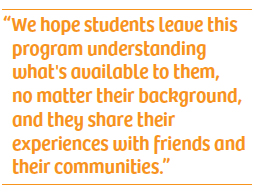
For these students and countless others, though, it was difficult to understand a realistic pathway to a career as an airline pilot.
Jordan Monk, a 17-year-old student at Warren Central, said, “I didn’t think I’d have this kind of opportunity, that there would always be barriers in my way. Becoming a pilot seemed difficult, something that would take a lot of time to get into by earning a degree, finding funding and other obstacles. Aviation was always something I wanted to pursue, but I didn’t know if it would be possible.”
Morton said he hopes the students help spread the word about their summer flying with LIFT. “We hope students leave this program understanding what’s available to them, no matter their background, and they share their experiences with friends and their communities.”
Becoming a pilot certainly isn’t easy—or cheap. But Republic has made significant investments to lower the hurdles that cost and accessibility present so that students like Brenden, Jordan, Ayah and Ethan as well as many others can see that aviation does have a pathway for them. The dream of flying passengers safely to their destinations and seeing the world through their job is not only achievable but they can begin their route to becoming an airline pilot as high school students right here in Indianapolis.
Fenner agrees that this program has done just that for him. “This program gives you a taste. Flying can be intimidating, which is probably why a lot of people don’t think they can do it. This summer flight program removes barriers to explore the opportunity, and now I am hooked.”
Lauren Gaudion is director of corporate communications and public relations at Republic Airways.
Acceptance, advocacy help people with disabilities
By Brandy Dickerson
Now more than ever, diversity and acceptance mean we need to break down barriers that prevent inclusion for people with disabilities. I know this because I have cerebral palsy, a group of disorders that affects my ability to move and maintain balance and posture. Noted as a common motor disability that begins during childhood, cerebral is associated with the brain, and palsy is associated with weakness or problems using the muscles. But I have never let my disability define my ability.
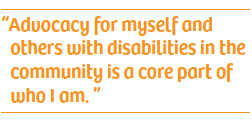
I have a fulfilling career and an active life that I have worked hard to maintain. As a lead retention specialist in the Employment Division at Easterseals Crossroads, I assist people with disabilities in all aspects of achieving and maintaining employment suited to their interests and abilities. And on a daily basis, I provide people with disabilities education toward self-advocacy, which can include benefits counseling to address and reduce fears around work as well as the potential loss of benefits that can occur when someone starts a job. Advocacy for myself and others with disabilities in the community is a core part of who I am.
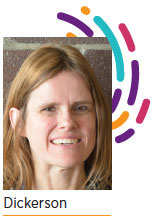
The focus on advocacy started at an early age—when my mom engaged me in physical therapy at just one-and-a-half years old. My very young mother recognized my disability, later defined as cerebral palsy, and a friend recommended an early intervention program. My mom learned to advocate for me by embracing some procedures and refusing others; and my family participated in my therapy—physical therapy, speech therapy, writing, reading, walking and many other life skills. I didn’t learn to read until later in elementary school, when I perfected my ability to memorize words and then sound them out.
Fortunately, my mom learned and understood the benefits of early intervention even before it was widely recognized as beneficial for young children.
My childhood doctor told my mom I wouldn’t be able to accomplish much in my life. That was in the mid-1970s. Since then, I have:
- Learned to ride a bike;
- Canoed Boundary Waters in Minnesota and Canada;
- Climbed a tree with no branches;
- Snow skied and water skied;
- Graduated from college;
- Worked as an independent advocate and employment advocate for people with disabilities;
- Served as an active member of the Governor’s Council for People with Disabilities;
- Worked weekends as a supervisor/runner/expeditor for a catering company for large-venue sports events;
- Bought my own condominium;
- Obtained my real estate broker license;
- Obtained my license to drive my own car;
- Bungee jumped in New Zealand; and
- Traveled around Australia, Europe, Mexico, Canada, the Caribbean and most of the U.S.
My childhood doctor was wrong. And my future goals are like those of anyone else—I would love to see myself eating healthier and exercising. And I still want to parachute out of a plane.
Throughout the years, I felt as though I had to prove myself in ways that individuals without disabilities have not had to do. And that misperception of my ability has been challenging at times. Sometimes an employer’s expectations of me seemed low because of my disability. But after I showed my boss I could do the job I was hired to do, the expectations of me were readjusted. Professionally, I want to continue to obtain educational training regarding employment and disability services. Continuing education will help me better serve those with whom I work.
I was very recently recognized with both the local and national Lois Curtis Award from APSE (Association of People Supporting Employment First). The award is based on a nominee’s personal achievement in advocating for inclusive, individualized, community-based employment and/or independent living. This recognition was huge because advocacy is so important to me and my family. I learned early on that advocacy is critical to achieving the lifestyle you want to have.
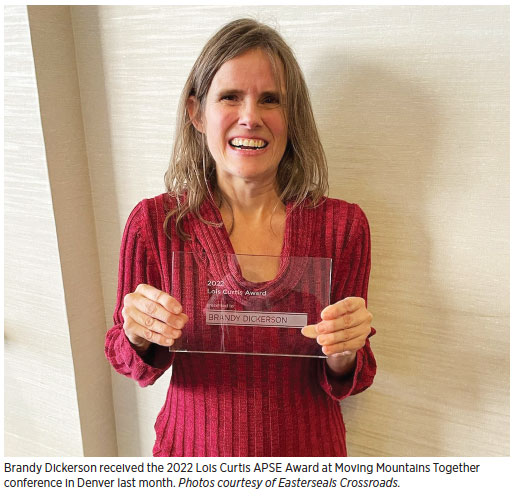
I absolutely know a community is more diverse and inclusive when it is exposed to more people with disabilities who are working, engaging, socializing, and being active. Acceptance is the first thing that needs to happen, because the strength of a community is dependent upon all its members. People with disabilities are not heroes; they are just members of the community who want the same things in life as anyone else.
Easterseals Crossroads has been helping children, adults, families, and veterans live more independent lives for 85 years. It is both a challenge and an opportunity to make central Indiana a more inclusive place to live, learn, work, and visit. Easterseals Crossroads exists as a resource for the entire community as it embraces the benefits of inclusion, diversity, and equity for a stronger future. And I am so fortunate to work for an employer that has helped me achieve so much of what I value.
Brandy Dickerson is lead retention specialist at Easterseals Crossroads
CICF philanthropic collaborative shares progress on equity journey
By Brian Payne
In 2018, the Central Indiana Community Foundation philanthropic collaborative, including The Indianapolis Foundation, Hamilton County Community Foundation, and Women’s Fund of Central Indiana, made a promise to our community: to make central Indiana a place where everyone has an equitable opportunity to reach their full potential—no matter place, race or identity. The racial reckoning of the past few years has sparked many organizations throughout the nation to introduce or re-examine the role of equity in their values and work. Our collaborative continues to learn, adapt, and take actionable steps to fulfill our promise and live out our mission.

This is hard work that demands patience and humility. No individual or organization that commits to equity gets it right all the time. The path forward is not linear. We have struggled in many areas—especially internally—as we work toward inclusivity, sharing power, and living our values. But we would like to share some progress that our collaborative has made since we first embarked on this journey. The following are four projects that demonstrate how we are executing our mission by partnering with colleagues across the country; creating more equitable pathways to opportunity; making possible frank discussions about race; and building a platform for others to launch their equity journeys.
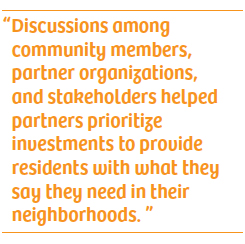
NEON: Connecting with national colleagues on the path to equity
We cannot make lasting and meaningful change by ourselves. Relationships are essential to equity. In early 2021, the Community Foundation Opportunity Network selected CICF and The Indianapolis Foundation to join a cohort of seven community foundations across the country as part of Nexus for Equity and Opportunity Nationwide (NEON). Among the objectives: To prove the efficacy of aligned action toward common goals, provide a template for the community foundation field and seek national investment. This network, including community foundations from Hawaii, Silicon Valley, Seattle, Lincoln (NE), Cleveland and three from Connecticut, works together, guided by a shared set of goals, metrics, and strategies within a broad racial-equity framework to create systemic change in power and leadership, and income and wealth. Member foundations share research, best practices and measurement tools, while doing the unique work required by their communities.
Connected Communities: Creating equitable pathways to opportunities
CICF’s Connected Communities initiative, a partnership with the City of Indianapolis, is an expansion of Marion County’s trails and greenways that will connect individuals to each other, to places, and to opportunities through world-class pedestrian and bicycle infrastructure. We will invest in pedestrian and protected bicycle infrastructure in communities to help increase upward mobility, health opportunities, and access to employment, education, and recreation. The first major project begins with a five-mile expansion of the B&O railway trail to complete a 16.65-mile corridor connecting Haughville, Hawthorne, and Fairfax to both Speedway and Brownsburg. Resident voice is critical to this project and our collaborative’s value that we do things with and not to communities. Discussions among community members, partner organizations, and stakeholders helped partners prioritize investments to provide residents with what they say they need in their neighborhoods.
Robert E. Lee & Me: Pushing forward with discussion
Candid and open discussion is a powerful tool in the work of equity. Earlier this year, Hamilton County Community Foundation and United Way of Central Indiana invited staff and board members to read the memoir, “Robert E. Lee and Me: A Southerner’s Reckoning with the Myth of the Lost Cause,” by Ty Seidule, a retired United States Army general and historian. Two virtual discussions were held, and later the group gathered in person for an additional conversation with the author. Participants spoke transparently about our country’s racial history, their personal experiences and learnings, identity and family stories. This experience helped to build stronger, more authentic relationships among leadership of our collaborative while expanding the discussion about equity and understanding of racial history in Hamilton County. Plans are in the works to bring Ty Seidule back for similar conversations with high school students.
The Movement of 10k: Moving people toward works of equity
The CICF philanthropic collaborative started its equity journey with intense learning that led to changes in action. A new digital platform, launching in the fall, makes that journey accessible to others.
Funded by The Indianapolis Foundation, the Movement of 10,000 (MVMT10K) supports people in their commitment to advancing racial equity in central Indiana. The goal: To recruit and engage at least 10,000 people to get smarter about systemic racism in our country and community and to make change through a life’s practice of real action. MVMT10K is a digital gym for people to exercise their commitment to equity, providing resources, community, and accountability.
The platform is powered by a partnership with Haystack, a local certified minority-owned business that is helping to design, architect and provide thought-leadership for this project.
Brian Payne is president and CEO of Central Indiana Community Foundation.
CREA takes impressive strides in two-year-old DEI quest
Content provided by CREA LLC
At Indianapolis-based CREA LLC, one of the nation’s top financial syndicators in the affordable housing industry, we are very intentional with our DEI efforts. We hope explaining how our journey unfolded can inform your own DEI initiatives.
With seven regional offices, our purpose-driven work involves the investment, creation, and preservation of affordable housing communities for individuals and families spanning more than 800 communities in 48 states. While our mission and DEI are a good fit, the commitment to DEI from our founder, Chairman and CEO Jeff Whiting, has been critical to the success of our social impact programs and initiatives.
For the past two years, we have embarked on a journey of discovery to create a diverse, equitable, and inclusive workplace. This has been supported not only from an initiative perspective, but also through investments in human capital and resources to ensure our goals come to fruition.
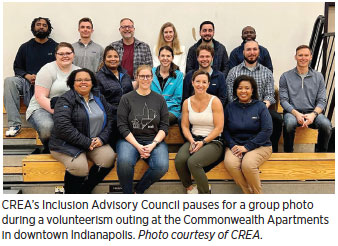
CREA’s journey to building a more equitable and inclusive company was initiated through a partnership in 2020 with Hummingbird Humanity, a national DEI consulting firm. Hummingbird served as a compass, and we are now soaring in the right direction. The partnership started with development of a comprehensive plan and roadmap to expand our thinking and culture around inclusion.
First, we offered enlightening educational sessions, including a DEI Speakers Series and Diversity Learning Circle, both of which saw high levels of engagement.
Second, we developed an Inclusion Advisory Council composed of individual employees throughout the company who have stepped up to take a lead role in guiding our DEI strategy. The IAC has developed a strategic plan that includes comprehensive goals, encompassing primary focus areas: Representation, Social Impact, Business Impact, and Engagement & Belonging. Through this work, the company is ensuring that DEI and social impact are infused throughout the organization. It is not just one individual’s job to ensure that we are incorporating these areas into our culture, external brand, and internal business practices. Instead, the IAC provides a collective strategy created by a diverse set of employees to reduce barriers to success.
After the murder of George Floyd, Jeff Whiting made a critical decision to act—not just by issuing statements on matters of social justice and poverty, but through various investments. Jeff felt that as a company, we needed to play an active role in breaking the cycle of poverty and addressing the barriers that have historically prevented marginalized communities from achieving their dreams. In his mind, the greatest impact would be made through intentional investments in education. In the Fall of 2020, CREA began the process of establishing a foundation and in May 2021, CREA Foundation was born.
In August 2021, we hired Arvetta Jideonwo, a 20-year veteran of nonprofit executive leadership and philanthropy, as Head of Social Impact and Executive Director of CREA Foundation. Arvetta oversees strategic investments in the community through corporate giving, volunteerism, and social impact initiatives, in addition to leading CREA Foundation and investments in college access, prep and success.
In March of this year, a formal partnership was formed with Indiana University Purdue University Indianapolis to create the CREA Scholars program. CREA Scholars provides comprehensive financial support for students at four-year universities who reside in affordable and low-income housing communities, as well as extensive wraparound services to ensure those students graduate.

In August, CREA Foundation will announce and induct the inaugural class of CREA Scholars. After months of research, due diligence and conversations with education experts and policymakers, the Foundation will support 10 students in an environment that will be extremely supportive of their needs. CREA Foundation is currently looking for a university partner for 2023.
In May 2022, CREA convened its first Summer Book Club. The book chosen by CREA employees is “The Color of Law: A Forgotten History of How Our Government Segregated America,” by Richard Rothstein. The book addresses the dark past of America’s history and how de jure segregation impacted African Americans and how the inability to build wealth through home ownership has contributed to the wealth gap today. The book club is just one example of how CREA has worked to develop a “Culture of Good,” which includes volunteerism at the affordable housing communities we syndicate, corporate philanthropy in central Indiana, employee matching, CREA Foundation, and our DEI Speakers Series. CREA has also worked to create employee resource groups that will be offered throughout the year, including its first focus group: Women at CREA.
In the end, our success in creating a Culture of Good through DEI initiatives has rested solely on intentional actions aimed at creating a more diverse, equitable, and inclusive work environment. The programs we’ve established have been primarily determined by our employees, which has created more ownership and participation.
CREA believes people want to do good at work. As executives, we must provide them with the opportunity and platform to do so—and do it well.
Construction industry is ripe for workforce diversification
By Molly Burns
Over the next 15 years, the number of high school graduates in Indiana and the Midwest will continue to decrease from today’s levels. Based on this information, we know there will be far more retirees than there will be new workers coming into the construction industry. We need to approach the recruitment of new employees differently than in the past.
In addition to recruiting employees, it is also critical that we increase the diversity of our workforce. We, and our clients, want the employees of F.A. Wilhelm Construction to be reflective of the communities in which we live and work. For decades the construction industry has been comprised mostly of males, most of them white. According to the U.S. Department of Labor, 94% of the people employed in the construction industry are male. Progress is happening as more women and other diverse populations are joining the industry, but growth has been slow. As a significant contributor and employer, we asked ourselves what we needed to do to reach and attract people from diverse backgrounds to the construction profession?

An important element of our corporate strategic plan is focused on diversifying our workforce by 5% each year. Achieving this goal will require us to recruit both construction, administrative, and field personnel from non-traditional areas. To assist in diversity initiatives, we recently promoted a project manager, Ana Aranda Sanchez, to lead our diversity efforts. With assistance from several of our managers and human resources professionals, Ana assists and represents Wilhelm in these recruiting efforts.
Ana is a good example of how we can diversify our industry. She grew up on the east side of Indianapolis and attended Warren Central High School, where she began taking construction classes through the Walker Career Center. Her father worked as a mason, and she was exposed to the construction industry from a young age. After high school, she attended IUPUI and graduated with a degree in Construction Engineering Management. She has worked for Wilhelm for five years as a project engineer and project manager in the industrial market. Her knowledge of the community and experience in the field is crucial when talking with people who are considering a career in construction.

Since taking this role in January, Ana immediately began reaching out to the trade unions, high schools, and various workforce development agencies to share our interest in broadening our search for employees. We established a partnership with the Latinas Welding Guild, and we are working with the Walker Career Center at Warren Central High School to hire part-time high school students who have an interest in construction.
We knew that Wilhelm needed to improve its outreach to a more diverse population. In the past, we focused our recruitment efforts on students from just a few local universities. Over the past several years, our Human Resources Department has grown our recruiting efforts to include colleges and universities who serve a more diverse student population. In addition to reaching diverse students, we are reaching students with a variety of training/educational backgrounds, which makes our workforce stronger. For field personnel, we have partnered with the local unions in their recruiting efforts to attract more diverse individuals to the trades.
Another approach that we have taken to grow our workforce is recruiting talented individuals from non-construction related backgrounds. Not everyone who works in our industry needs to have a degree in a construction-related field or completed an apprenticeship program to be successful. We have found that people who have excellent problem-solving and communications skills can be successful in a variety of roles within our organization.
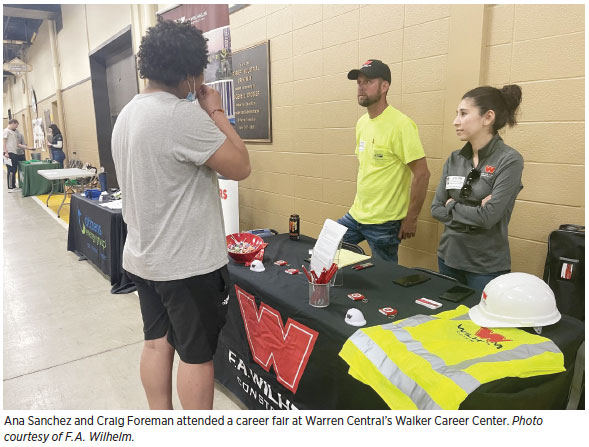
Finding a more diverse group of workers is only part of the battle. Making cultural shifts is another priority. Walking onto a job site for the first time can be very intimidating. Providing a more welcoming culture and better orientation on the job site is important to attracting and retaining employees. Regularly, we provide training to our project superintendents on how to better orient people when they begin working on a job site. It’s critical that we make our employees feel welcome and valued.
With our focus on diversifying our workforce, we are beginning to see results. For the year 2021, our average work force was 80% white male. As of March 2022, our workforce was 76.6% white male. We are committed to making bigger strides and we are optimistic about the future of our workforce.
The demand for people continues to rise as the demand for construction increases and baby boomers retire. The industry provides good wages and benefits, injects opportunity and redevelopment into communities, and creates infrastructure critical to keeping our towns, cities, state, and country moving forward.
A diverse workplace requires representation from a variety of areas, including gender, race, religion, sexual orientation, culture, education, and age. Having a diverse workforce benefits our company and industry by bringing a variety of different perspectives together to be more creative and innovative.
Molly Burns is vice president of corporate marketing for F.A. Wilhelm Construction.
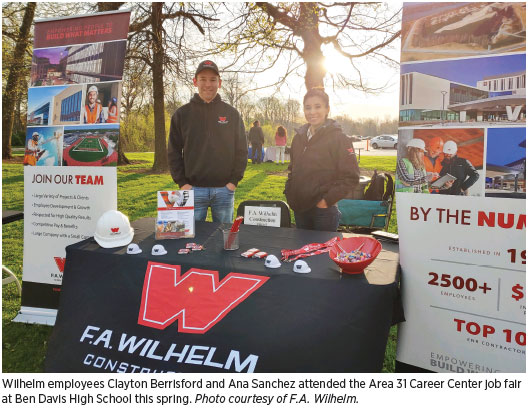
DEI in the workplace: Taft’s experience offers lessons for others
By Chou-il Lee and Kristine Gordon
Diversity, equity, and inclusion. These are buzzwords every business in America is touting—and for good reason. The social movements of the last few years made racial, economic, and social disparities impossible to ignore. But we’re two years out from the racial reckoning of 2020, and while buzzwords are well-intentioned and can move the ball in the right direction, they can feel hollow. Now is the time to be persistent with our DEI efforts to ensure they are making meaningful and lasting change.
How do we do that? How do businesses use the momentum of the last few years to solidify diversity, equity, and inclusion in their corporate structure? There’s no one answer, and we at Taft are still figuring it out. But we’ve learned that the one thing you can’t make progress without is buy-in: the belief that diversity in the workplace really matters and a continued commitment to achieving that goal. Unfortunately, buy-in from all employees won’t happen without effort. So, you need buy-in from the top that doesn’t fade with time. The rest will follow.
While buy-in is necessary, it isn’t sufficient. That top-down support must be transformed into meaningful action. At Taft, our firm leaders have bought in. They’ve recognized that by embracing and celebrating diverse perspectives and life experiences, we offer more rewarding careers for our attorneys and staff and more creative solutions for our clients.
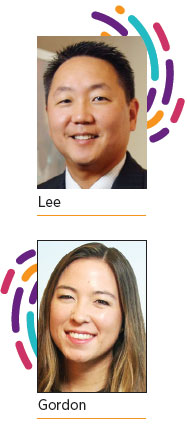
But they didn’t stop there—they took action. Taft created a new Diversity and Inclusion division within the firm. We named Adrian Thompson, long-time partner in Taft’s Cleveland office, our first Chief Diversity Officer in 2015, and gave him a well-funded budget to put Taft’s money where its mouth is. And recognizing that our legal professionals won’t have all the answers, Taft retained sociology and culture-change experts, Dr. Arin Reeves and Michelle Silverthorn, to educate all employees and provide real-time insights on how to improve Taft.
From them we’ve learned that there’s no sure-fire method to achieving a diverse and inclusive culture. And conversely, there are infinite ways not to. Our answer is to try: to brainstorm ideas, try them out, and ditch ideas that do not work in favor of those that do. We’ve invested in initiatives to recruit and retain diverse talent, and we’ve measured our successes and failures and modified accordingly.
For example, Taft created its Diversity and Inclusion Fellowship Scholarship program—a summer internship offered to historically underrepresented law students that includes an opportunity for post-graduate employment. Taft created its Mentor-Champion Program to provide our diverse associates access to different perspectives firm-wide and the opportunity to develop mentors and sponsors who will support them on their path to partnership. Both programs have undergone several iterations. We’ve fine-tuned them by accepting feedback and implementing changes. This is critical. To get better, we’ve learned that we must acknowledge our failures along with our successes and must change course as necessary.
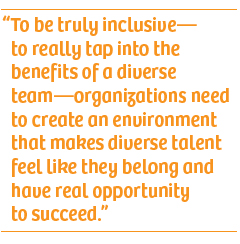
We’ve also learned that while numbers are an important metric, diversity, equity, and inclusion is so much more. To be truly inclusive—to really tap into the benefits of a diverse team—organizations need to create an environment that makes diverse talent feel like they belong and have real opportunity to succeed. So we hold an annual diversity retreat to bring all Taft’s diverse talent firm-wide under one roof. Its purpose is two-fold. First, it develops community. It gives our professionals an opportunity to commune over shared experiences with others who look like them. And second, it formalizes an occasion for Taft to look in the mirror, learn from its team, and seize opportunities to get better. There’s little more harrowing than a room of diverse professionals raising the disparate obstacles they face within their organization every day—but you cannot address a problem if you don’t understand what it is.
Finally, there must be a strategy for promoting professionals of color into positions of real authority. Taft is intentional in promoting qualified professionals who represent the communities where we live and work. At Taft, women and professionals of color comprise 74% of our Executive Committee, 54% of our Compensation Committee, and 50% of the Partners-In-Charge of our offices.
Our goal is to give our diverse talent a vision for what their careers at Taft could be by giving them examples of people who look like them in positions of power.
Today, that’s Taft’s approach to advancing diversity, equity, and inclusion. We haven’t perfected it. We’re constantly evolving, so tomorrow it will be a little different—maybe a lot different. But we’re working at it every day because we want to provide that diverse, equitable, and inclusive society that is everyone’s goal—we want to ensure that there’s meaning behind our words.
Kristine Gordon and Chou-il Lee are attorneys at Taft and members of the firm’s Diversity & Inclusion Committee. Reach them at [email protected] and [email protected].
Procurement Roundtable offers a real boost to Black businesses
By Gary Naylor
As a member of the Indy Black Chamber of Commerce and the Indy Chamber, FrontRunner Media is actively engaged in the regional business community. So, when we were invited to participate in the Business Equity for Indy Procurement Roundtable, we committed before we knew exactly what we’d be doing.
BEI was launched through a partnership between Central Indiana Corporate Partnership and the Indy Chamber, with support from the Indianapolis Urban League, in response to racial unrest spurred by the murder of George Floyd. The initiative, led by leaders from a growing list of over 100 businesses, includes five unique taskforces working to address barriers to access and advance equity. FrontRunner was fortunate to connect with the Procurement and Participation Taskforce, and the fruits of that connection have just started blooming.
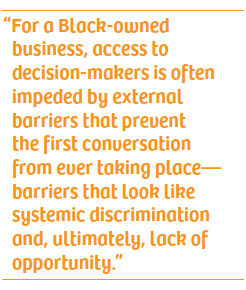
The Indy Black Chamber, working behind the scenes with representatives from the Indy Chamber and BEI, invited us to participate in the first in-person Procurement Roundtable. It featured five Black-owned businesses, pitching their programs and services to a room of supplier professionals. For budding businesses, there’s no greater opportunity than addressing a room filled with decision-makers that are looking for solutions. For a Black-owned business, access to decision-makers is often impeded by external barriers that prevent the first conversation from ever taking place—barriers that look like systemic discrimination and, ultimately, lack of opportunity. We immediately accepted the invitation to participate and began strategizing on how to best leverage this group of potential clients. We focused on how we could tell our story in a way that allows us to help tell their stories.
What made this process so beneficial for the participating businesses was how much support was available. Once FrontRunner agreed to participate, both chambers engaged with us in the weeks leading up to the event to ensure we had a strong presentation that would resonate with the audience. This support is critical to small businesses, especially Black-owned businesses that struggle to access ancillary funding for marketing, coaching, mentorship, and guidance during every stage of business growth.
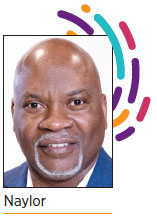
Since the Procurement Roundtable event, FrontRunner has completed one project with an attendee from the event and is in discussion with three other organizations that we connected with during the May event. Though we’re still working toward a long-term signed contract, this experience created an opportunity for us to have a dialogue with businesses that would not only benefit from our services but also those that would be able to engage FrontRunner for multi-year, multimedia contracts. The sparseness of such contracts is a deterrent to the long-term success of Black-owned businesses across the country.
After the event concluded, and well after most attendees had left, I noticed that one of the Procurement and Participation Taskforce members was still hanging around. Gordon Brooks, the Chief Procurement Officer with Eli Lilly and Co., is actively involved in BEI and demonstrates a commitment from top leadership that encourages me that if the collective business community stays on this course, we’ll be able to realize a future where Black-owned businesses have access to the resources and support they need to succeed. I know from my experience working in corporate America, that executives like Brooks sometimes just pay lip service to programs like this. But Brooks and others are committed.
My biggest takeaway from this experience is simple: Get involved. I would encourage Black-owned businesses to figure out how they can leverage organizations like BEI to enhance the ability of their business to be successful. If you’re willing to show up, stand up, and make connections, I strongly believe that BEI will help improve your ability to grow your business.
Gary Naylor is president of FrontRunner Media.
